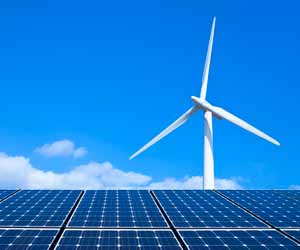Wind Power Employment
What You Need to Know
Like solar power, wind power has increased in popularity over the past decade thanks to increased demand for green energy sources. Interestingly enough, wind power is technically a converted form of solar energy because wind itself is created by changes in atmospheric changes which are greatly influenced by solar radiation.

As the sun heats different areas of the earth at different rates, solar radiation is absorbed and reflected at different rates resulting in changes in the atmosphere which create wind. Other facts, like the earth’s surface, can cause atmospheric changes as well. For example, absorption of the sun’s rays varies greatly between water and land. The motion of wind itself can be harnessed to produce wind energy with the use of wind turbines, large windmill-like machines with propellers that turn in the wind and generate electricity. These wind turbines can generate electricity for homes, businesses, and general utilities.
How Does Wind Power Work?
Wind turbines are intricate machines. A turbine includes blades, a tower to elevate the blades, and a great deal of electronic equipment which helps convert the wind energy into usable power. When the wind turns turbine blades, they produce electricity which can then be collected and channeled into power lines from which it can be delivered to utility customers. The tower portion of the turbine is generally made of steel while the propeller blades are usually made of a fiberglass-reinforced polyester or wood-epoxy, lighter materials which allow the propellers to rotate more easily than a heavier steel propeller would.
The bigger the turbine, the more power it can produce and turbine sizes have increased greatly since they were first developed.
Usually, wind turbines are clustered together in large turbine fields known as wind farms or wind power plants. The location of a turbine field is very important to its effectiveness. High wind speeds are essential to the creation of wind power, so turbine fields must be located in windy areas. Before building a wind turbine field, resource analysts must determine if there is sufficiently high wind-speed in the area to make the construction of a turbine field worth it. Currently, standard utility-scale wind turbines are capable of producing from 700 kilowatts to 2.5 megawatts of energy. So just how much energy is that, exactly? According to the American Wind Energy Association, the average US household uses about 10,655 kilowatt-hours of electricity per year, while one megawatt of wind energy can generate anywhere from 2.4 to 3 million kilowatt-hours. That means that one megawatt of wind is capable of supplying enough electricity for 225 to 300 US homeowners.
Employment Outlook in the Wind Energy Sector
According to the Bureau of Labor Statistics, wind power is the United States’ fastest-growing energy source. The US Department of Energy reports that wind power may be responsible for generating as much as 20 percent of the country’s electricity by the year 2030. Although wind power plants were once limited to a few areas in the country, today the majority of states house working wind farms.
Jobs available in the wind energy sector vary greatly. You could work in construction, helping to build turbine parts and install them, or you could work in a development position as a resource analyst, figuring out which areas are best for housing wind turbine farms. An example of a job in the management area would be a power plant operator, who would help in overseeing wind power plants. A job in assessment and awareness could mean being a technician who specializes in turbine installation, maintenance, and repair.


 Teach English in Asia
Teach English in Asia  Cruise Ship Jobs
Cruise Ship Jobs  Alaska Fishing Industry Jobs
Alaska Fishing Industry Jobs  Sharing Economy / Gig Economy
Sharing Economy / Gig Economy